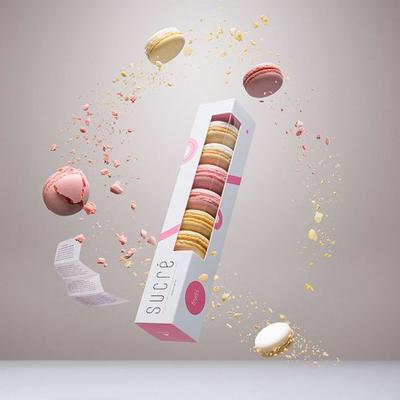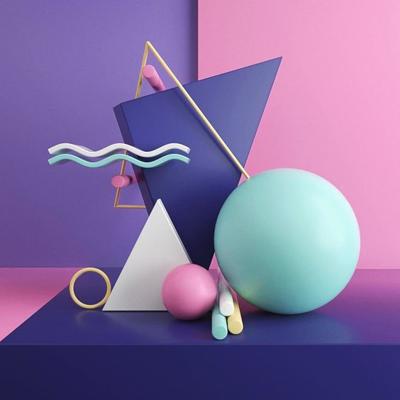My diary
While working at EON, I have been grappling with what I have learned so far. I typically love everything I learn and quickly see how I could apply it to what I am passionate about. I’ve been struggling, however, to grasp how I could use this technology. I love the thrill of being on the front lines of tech, living in the Silicon Valley of France. As a graphic design major, I enjoy the challenges of navigating new software, but pursuing this longterm puts me on a very different path. My particular style of art does not recreate what is real, but comments on reality through abstraction. Typically, creating things that look real is not exciting to me. If I want to look at something that seems real, I can look at reality itself. This goes for photography, illustration, painting, and any other medium. Even though virtual reality is incredible inside the headset, creating it is not as exciting to me.
While working with a tutor at EON named Thomas, he showed us some examples of some 3d modeling created by him and his peers. It was more stylistic and playful, which piqued my interest. I began to see how I could apply what I am learning to the illustration I long to create. Last year, I illustrated downtown Tulsa for a mural competition. In order to do this, I had to fly around google earth images using its three dimensional features and capture the angle I wanted to create. I then constructed the city on a two dimensional surface. If I could have used 3D modeling software, I could have illustrated the entire thing and rendered it in limitless angles. I can see how powerful this could be for my artwork.
Additionally, I began reading about the functions of augmented reality. There is currently a developing technology that maps a room to be recognizable by camera. In doing so, you are able to create a virtual world inside of your world. Although this is still a work in progress, one application is creating virtual sticky notes. Say you own an Airbnb and you would like to leave virtual notes around the space showing where to find certain household objects. This could be possible with the right augmented reality applications. I wonder how this could be used at ORU. I imagine a college weekend student reading about campus as he walks through it, pointing his phone at certain buildings. Little labels could appear describing the history and significance of all that he sees. Or I imagine a GPS that works with your camera, recognizing where a student is inside the first floor of the GC. By reading the surroundings, it could map out a line directing the student to the correct classroom. I certainly believe this is the future. I do not know if I will be a part of creating the future of virtual reality, but I am open to this possibility.
These 3D illustrations have inspired me:
brooklynnelise
23 chapters
16 Apr 2020
EON and the Future
Laval, France
While working at EON, I have been grappling with what I have learned so far. I typically love everything I learn and quickly see how I could apply it to what I am passionate about. I’ve been struggling, however, to grasp how I could use this technology. I love the thrill of being on the front lines of tech, living in the Silicon Valley of France. As a graphic design major, I enjoy the challenges of navigating new software, but pursuing this longterm puts me on a very different path. My particular style of art does not recreate what is real, but comments on reality through abstraction. Typically, creating things that look real is not exciting to me. If I want to look at something that seems real, I can look at reality itself. This goes for photography, illustration, painting, and any other medium. Even though virtual reality is incredible inside the headset, creating it is not as exciting to me.
While working with a tutor at EON named Thomas, he showed us some examples of some 3d modeling created by him and his peers. It was more stylistic and playful, which piqued my interest. I began to see how I could apply what I am learning to the illustration I long to create. Last year, I illustrated downtown Tulsa for a mural competition. In order to do this, I had to fly around google earth images using its three dimensional features and capture the angle I wanted to create. I then constructed the city on a two dimensional surface. If I could have used 3D modeling software, I could have illustrated the entire thing and rendered it in limitless angles. I can see how powerful this could be for my artwork.
Additionally, I began reading about the functions of augmented reality. There is currently a developing technology that maps a room to be recognizable by camera. In doing so, you are able to create a virtual world inside of your world. Although this is still a work in progress, one application is creating virtual sticky notes. Say you own an Airbnb and you would like to leave virtual notes around the space showing where to find certain household objects. This could be possible with the right augmented reality applications. I wonder how this could be used at ORU. I imagine a college weekend student reading about campus as he walks through it, pointing his phone at certain buildings. Little labels could appear describing the history and significance of all that he sees. Or I imagine a GPS that works with your camera, recognizing where a student is inside the first floor of the GC. By reading the surroundings, it could map out a line directing the student to the correct classroom. I certainly believe this is the future. I do not know if I will be a part of creating the future of virtual reality, but I am open to this possibility.
These 3D illustrations have inspired me:


1.
The First 48 Hours
2.
An Artist in Paris (Arts & Humanities)
3.
Little Moments Week 1
4.
Notre Dame de Paris
5.
Refugee Ministry
6.
Thoughts on Normandy
7.
Tenaciously Missional #1
8.
September Excursion
9.
Fall Break
10.
Challenges in Laval
11.
October Excursion
12.
Paris People
13.
EON Workers
14.
EON Reality: First Week
15.
EON and the Future
16.
EON Virtual Reality
17.
Tenaciously Missional #2
18.
Thanksgiving in Paris
19.
French Cuisine
20.
November Excursion
21.
French Currency
22.
Religious Experiences
23.
Versailles